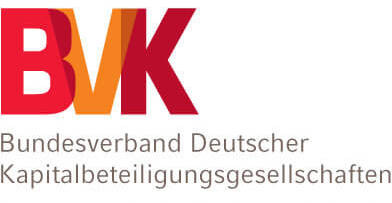NEWSLETTER of January 31, 2025
The following content has been added at finexpert:
Studies > Performance
Goldman Sachs
OUTLOOK 2025 – KEEP ON TRUCKIN'
The two key themes that have underpinned our investment recommendations since the trough of the global financial crisis (GFC)—US Preeminence and Stay Invested—remain intact. In fact, in 2024, the gap between the US and the rest of the world across key economic and financial market metrics widened further, with US equities outperforming again and US economic growth outpacing that in other developed markets. >more
Studies > Corporate Finance
BCG
BCG INVESTOR PERSPECTIVES: Q4 2024
Our most recent survey was conducted November 8–10, 2024. In the wake of the US elections and the S&P 500 setting several all-time highs, we find investors’ outlook to be quite bullish. Compared with three months ago, 74% of investors are more bullish on the economy and 75% are more bullish on the stock market—both of which are series highs. These views suggest that investors are optimistic despite slowly receding inflation and other risks. Geopolitical risks currently are the most important concern (highlighted by 49% of investors), followed by the Federal Reserve’s interest rate policy (45%) and its impact on consumer prices (31%). Still, 62% of investors view interest rate policy and 59% consider the US elections as the two factors most likely to affect 2025 equity returns. >more
Studies > Corporate Finance
KfW Research
KFW-KREDITMARKTAUSBLICK JANUAR 2025
New lending to businesses continues to recover from its low in autumn of 2023. For the first time in two years, the new business of banks with companies is growing again. KfW Research has calculated that new lending activity grew by 1.6% in the third quarter of 2024 compared to the previous year. Falling interest rates and a base effect created by the low lending volume in the same quarter of the previous year drove this development. The subdued economic environment, trade policy uncertainty and businesses’ reluctance to invest slowed the recovery in lending activity in the third quarter. >more
Studies > Risk Management
World Economic Forum
GLOBAL RISKS REPORT 2025
The 20th edition of the Global Risks Report 2025 reveals an increasingly fractured global landscape, where escalating geopolitical, environmental, societal and technological challenges threaten stability and progress. This edition presents the findings of the Global Risks Perception Survey 2024-2025 (GRPS), which captures insights from over 900 experts worldwide. The report analyses global risks through three timeframes to support decision- makers in balancing current crises and longer-term priorities. >more
Research Papers > Corporate Finance
PRICING POSEIDON: EXTREME WEATHER UNCERTAINTY AND FIRM RETURN DYNAMICS
Mathias S. Kruttli, Brigitte Roth Tran, and Sumudu W. Watugala
2024
We empirically analyze firm-level uncertainty generated from extreme weather events, guided by a theoretical framework. Stock options of firms with establishments in a hurricane's (forecast) landfall region exhibit large implied volatility increases, reflecting significant uncertainty (before) after impact. Volatility risk premium dynamics reveal that investors underestimate such uncertainty. This underreaction diminishes for hurricanes after Sandy, a salient event that struck the U.S. financial center. Despite constituting idiosyncratic shocks, hurricanes affect hit firms' expected stock returns. Textual analysis of calls between firm management, analysts, and investors reveals that discussions about hurricane impacts remain elevated throughout the long-lasting high-uncertainty period after landfall. >more
Research Papers > Corporate Finance
THE FED AND THE SECULAR DECLINE IN INTEREST RATES
Sebastian Hillenbrand
2024
This paper documents a striking fact: a narrow window around Fed meetings captures the entire secular decline in U.S. Treasury yields. Yield movements outside this window are transitory and wash out over time. This is surprising because the forces behind the secular decline are thought to be independent of monetary policy. Long-term bond yields decline when the Fed cuts the short rate and when the Fed lowers its long-run forecast of the federal funds rate (the "dot plot"). These results are consistent with the view that Fed announcements provide guidance about the long-run path of interest rates. >more













